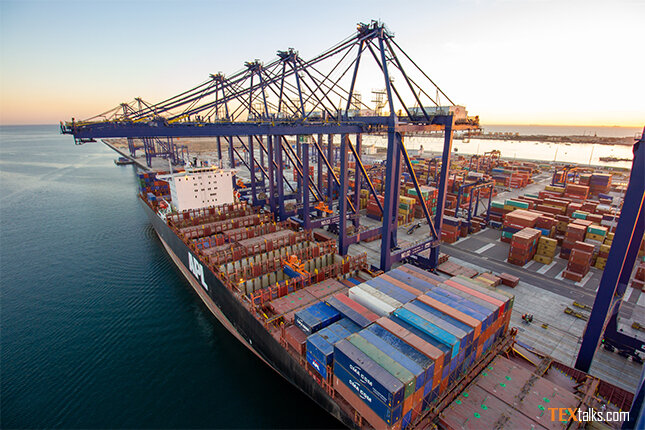Karachi Gateway Terminal Limited (KGTL), a joint venture between AD Ports Group and UAE-based Kaheel Terminals, has initiated a major dredging project at the East Wharf of the Port of Karachi, according to a news report.
The project will deepen berths and navigation channels, allowing KGTL to accommodate post-panamax vessels with a capacity of over 13,000 TEUs.
In tandem, KGTL’s sister company, Karachi Gateway Terminal Multipurpose Limited (KGTML), will upgrade its bulk handling capabilities to accommodate vessels of up to 120,000 tonnes, doubling the current capacity of 60,000 tonnes.
These developments are expected to bring significant benefits to Pakistan’s export and import sector. The ability to handle larger post-panamax vessels will reduce per-unit freight costs, improve shipping efficiency, and boost Pakistan’s export competitiveness, particularly in industries like cement, rice, and fertilisers.
Scheduled for completion in early 2026, the dredging project will also enhance operational efficiency. The turnaround time for a 60,000-tonne grain vessel is expected to decrease from 12 days to just three, significantly reducing port stay times and increasing throughput.
While the dredging project positions Karachi Port as a more competitive player in global shipping routes, it faces rising competition from regional ports in India, Sri Lanka, and the Middle East, which are rapidly modernising with advanced technology and logistics infrastructure.
To maintain its competitiveness, Karachi will need parallel investments in automation, digital tracking, and customs reforms. Without these improvements, alternative regional hubs may attract shipping lines seeking smoother operations and lower costs.
The dredging project, fully funded by AD Ports Group under long-term concessions—50 years for container handling and 25 years for bulk cargo—signals strong confidence in Pakistan’s maritime future.
However, Pakistan’s broader economic challenges, including currency fluctuations, high energy costs, and political uncertainty, could pose risks to the project’s success.




